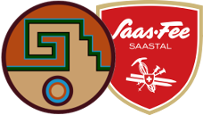Speaker
Description
Machine learning methods are integrated into the pipelined first level track trigger of the upgraded flavor physics experiment Belle II in Tsukuba, Japan. The novel triggering techniques cope with the severe background conditions coming along with the upgrade of the instantaneous luminosity by a factor of 40 to $\mathcal{L} = 8 \times 10^{35} \text{cm}^{−2} \text{s}^{−1}$. Using the precise drift-time information of the central drift chamber, a neural network L1 trigger estimates the 3D track parameters of found single tracks. An extension of the present 2D Hough track finder to a 3D finder is proposed, where the single hit representations in the Hough plane are trained using Monte Carlo. This 3D finder enables an improvement of the track finding efficiency by including the stereo sense wires as input. The estimated polar track angle allows a specialization of the following neural networks to phase space sectors.
